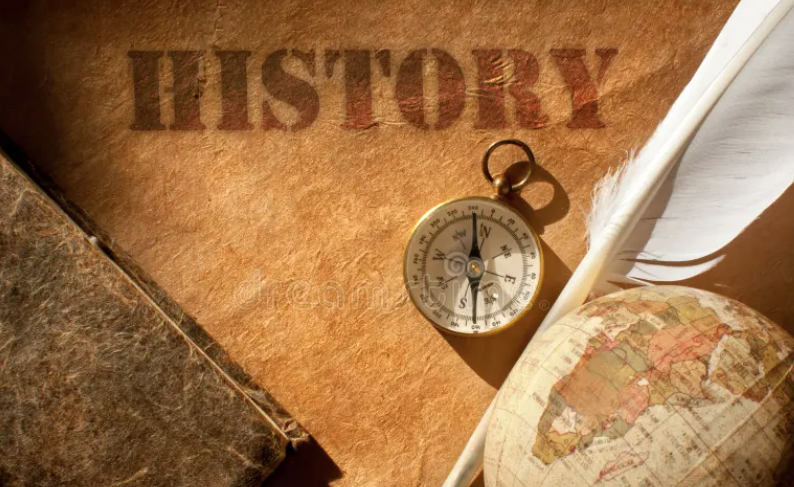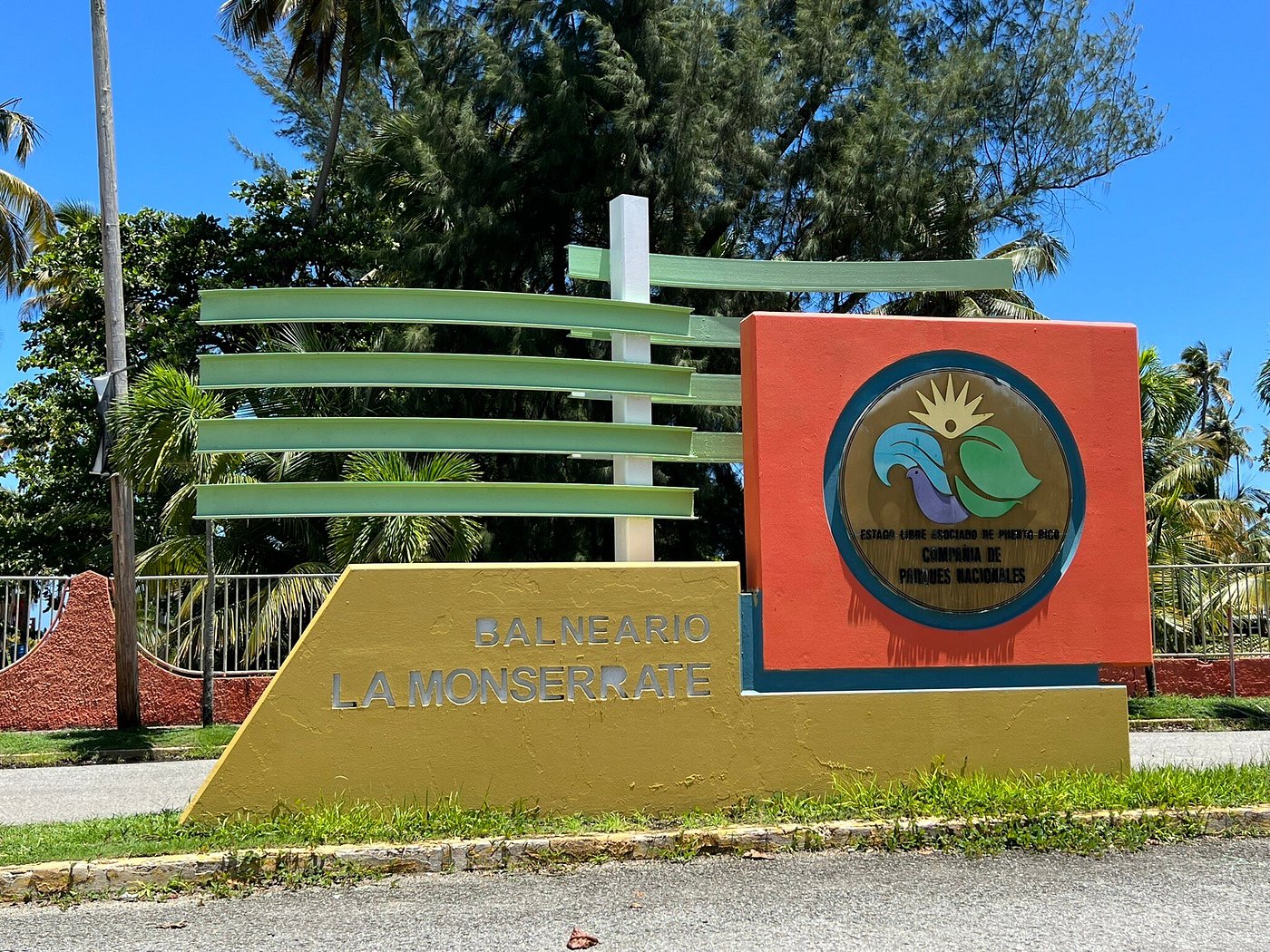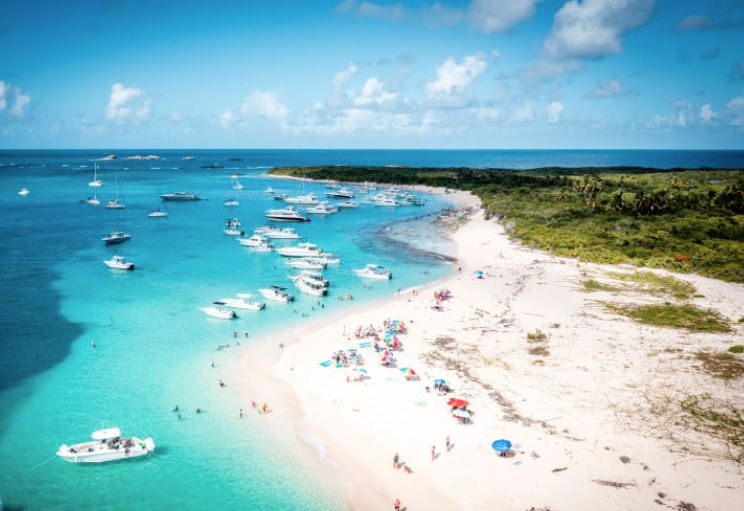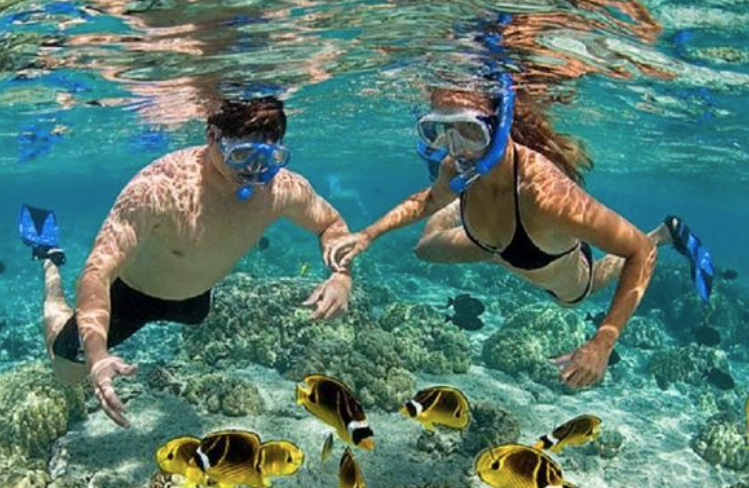The History of Luquillo Beach and Its Surroundings

At the point where rainforest meets sea, Luquillo Beach—formally the Balneario La Monserrate—unfolds as a broad, golden crescent backed by palms and mountain silhouettes. Known today for its calm water, family facilities, and Blue Flag recognition, Luquillo’s shoreline has long served as a threshold between inland farming communities, the cloud-wrapped peaks of El Yunque, and the Caribbean trade lanes just offshore. The beach’s story is one of nature’s shelter, transportation corridors, small-town rhythms, and a mid-century turn toward organized recreation that set the stage for modern stewardship.
From Forest Slopes to Coastal Plain
Before roads and lifeguard towers, the area that became Luquillo’s balneario was a coastal edge shaped by dunes, sea grapes, and swales that gathered rainwater flowing down from El Yunque. Indigenous communities knew this interface well, moving along rivers and coasts to fish, trade, and gather salt. Over time, smallholdings appeared on the piedmont—plantains, root crops, and fruit trees—while the shore remained a place to launch skiffs and watch the weather. The elegant arc of sand exists thanks to offshore sandbars and reef fingers that slow Atlantic swells, creating the gentler waters families love today.
A Town Grows Beside a Natural Haven
The municipality of Luquillo developed as a modest settlement between the sea and the forest, its plaza life paced by fishing trips, church bells, and market days. Long before visitor parking lots, locals treated the beach as an everyday commons: a place to mend nets, wash boats, and hold Sunday gatherings beneath palms. The town’s identity—quiet, neighborly, outdoorsy—formed in dialogue with the sand and surf. Meanwhile, the nearby rainforest, with its cascades and coquí chorus, gave the coast a protective backdrop and a reliable source of freshwater that fed wetlands and groves along the littoral.
Roads, Recreation, and the Balneario Era
In the early to mid-20th century, improved highways along Puerto Rico’s northeast coast transformed access. The route that became PR-3 brought weekenders from San Juan and workers from inland towns to the shore in a single morning. As automobile culture spread, the island embraced a network of balnearios—public beach parks with lifeguards, showers, picnic shelters, and parking. La Monserrate emerged as one of the jewels of this system, its sweeping bay and shallow approach ideal for safe bathing. The beach acquired marked swimming zones, ranger stations, and shaded picnic groves, formalizing what had long been a community shoreline into a managed recreational asset.
The Rise of the Luquillo Kiosks
Food quickly became part of the beach’s identity. Informal stands evolved into the now-famous Luquillo Kiosks, a linear village of eateries serving everything from alcapurrias and bacalaítos to grilled snapper and tropical frappés. What began as simple fry counters supporting beachgoers grew into a culinary landmark that links sea, town, and rainforest agriculture. Families could swim, rinse off, then stroll to a kiosk for heaping plates of rice and beans, garlicky mofongo, or fresh seafood. The kiosks stitched local enterprise into the recreational landscape, ensuring that tourism dollars circulated close to home and that coastal cooking defined the visitor experience.
Surf and Sanctuary: La Pared and Beyond
While La Monserrate is celebrated for calm water, nearby La Pared—a short stretch east of the balneario—earned a reputation as a friendly surf break, drawing beginners and longboarders who appreciate its manageable peaks. This dual identity—family cove beside mellow surf—made Luquillo a rare place where different ocean users coexist in easy proximity. The surrounding dunes and coconut groves also nurtured wildlife; shorebirds patrolled the wrack line, and occasional sea turtle nests reminded residents that the beach is habitat first and playground second. Over decades, community groups and public agencies coordinated clean-ups, access paths, and signage to balance usage with care.
Blue Flag Standards and Ongoing Stewardship
As environmental practices matured island-wide, La Monserrate sought and earned Blue Flag status for water quality, safety, and environmental education. The designation formalized routines—testing, lifeguard staffing, accessible walkways, and dune protection—that locals had long valued. It also helped guard against erosion and litter by emphasizing designated entrances, boardwalks, and vegetated buffers. In a region where storms can rearrange coasts in a single season, these measures preserve the features that make Luquillo special: soft sands, gentle profiles, and that unmistakable clarity on calm mornings.
The Rainforest Connection
Luquillo’s history is inseparable from El Yunque. The rainforest’s ridgelines capture trade-wind moisture, feeding streams that meander to the sea and flush the estuaries that once ringed the coast. Hikers and waterfall-seekers often pair a morning in the forest with an afternoon at La Monserrate, a pattern that dates back to the earliest days of road tourism. This mountain-to-sea rhythm shaped local businesses—guesthouses, guides, fruit stands—and reinforced the idea that Luquillo sits at a gateway: rainforest to reef, canopy to cove. The scenic backdrop also made the beach a favorite for photographers and festival planners, layering cultural memory atop natural beauty.
Walking the Timeline Today
A modern visit can read like a time-lapse of coastal Puerto Rico. Arrive early, when the palms throw long shadows over empty sand, and imagine the workday dawns of earlier generations. As families set up coolers and canopies, note the infrastructure that marks the balneario era: lifeguard towers, rinse stations, picnic shelters etched by salt. Wander toward the kiosks and you’ll feel the entrepreneurial heartbeat that turned snacks into signature cuisine. Finish with a sunset stroll along La Pared, watching surfers outline the horizon—proof that the beach still adapts, welcoming new traditions without losing its old soul.
Why the Past Matters
Understanding how Luquillo became Luquillo clarifies the path forward. The dunes and sea grapes are not just scenery; they are protective systems that hold the shoreline together. The Blue Flag protocols are not just checklists; they are a promise that families can swim safely and nature will be respected. And the kiosks are more than restaurants; they are culture—living proof that local foodways can thrive beside a managed public beach. When visitors spread a towel on La Monserrate, they borrow from centuries of relationships between forest, town, and tide. Caring for those relationships—sticking to paths, packing out trash, and supporting local businesses—ensures that the next chapter keeps the same golden glow.
Tip: Weekdays offer the calmest vibe. Arrive early for glassy water, then save appetite for a late lunch at the kiosks—Luquillo’s most delicious footnote to its long coastal story.


